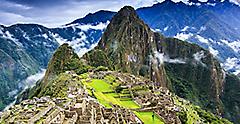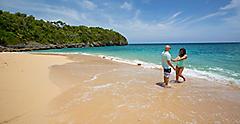As you traipse along the sugary sands of Copacabana and Ipanema beaches, the history of Rio de Janeiro may be the farthest thing from your mind. Brazil's Cidade Maravilhosa (marvelous city), after all, is famous more as a timeless coastal paradise than for the centuries of heritage that reside onshore.
Still, if you're traveling to Rio de Janeiro, it's important to dive into the city's past before you take a dip in its captivating present day. From top attractions like Sugar Loaf Mountain and Christ the Redeemer statue, to historical neighborhoods like Lapa and Santa Teresa, Brazil's premier paradise is so much more than the pretty face it presents to the world.
It's also fascinating to learn more about the history of Brazil's famous Carnival celebration, even if you don't plan to be in the city when it occurs.
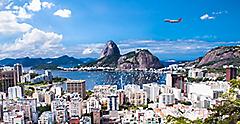
Rio's (Re)Discovery
Who & When Was Rio De Janeiro Founded?
Let's go back in time, specifically to 1502, when Portuguese explorer Gaspar de Lemos first laid eyes upon what is now Rio de Janeiro. An interesting fact: The city founders named it this — "Rio" meaning river in Portuguese — because they mistakenly thought that Guanabara Bay was the mouth of a river.

Of course, people had been living in this area for centuries before the Europeans arrived. Specifically, the Guarani and Tupiniquim were among the most numerous native inhabitants of precolonial Rio. If you want to learn more about Rio's indigenous heritage, be sure to visit the Museu do Índio in the city's Botafogo neighborhood!
From the city's official founding in 1565 all the way until the present day, Rio de Janeiro has been one of the most important cities in South America. In 1763, it became the capital of the Brazil colony, a title it retained in 1822, when Brazil declared independence from Portugal. Rio remained the capital until 1960, when the current capital of Brasilia (one of the world's first modern "planned" cities) was built.
Thankfully, the history of Rio de Janeiro didn't end when its tenure as Brazil's political center ended. And neither did the rise of São Paulo, Brazil's commercial capital, knock Rio off its pedestal. The city's gorgeous beaches have made it one of the world's top tourism destinations. It remains a hub of cuisine, culture, and sport — the latter of which culminated when it hosted the 2016 Olympics.
The History Of Rio's Tourist Attractions
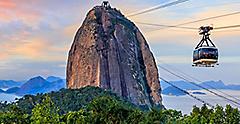
Sugarloaf Mountain is an iconic symbol of Brazil. However, while the Pão de Açucar (as it's known in Portuguese) has always been a famous landmark in Brazil, its worldwide fame only began in the 20th century — specifically, when the cable car that currently runs to the top every 30 minutes opened in 1912. Prior to this, reaching the top would've required some pretty sick climbing skills!
Not surprisingly, many of the other tourist attractions you can visit while traveling to Brazil have interesting stories. A more modern one is that of Maracanã Stadium in Rio's downtown. Since opening in 1950 for that year's World Cup, it remains an icon of Brazilian futebol (soccer) and is one of the world's most famous such stadiums. Even if you're not a big sports fan, a guided tour of the massive complex is a worthwhile endeavor.
Not far from Maracanã sits Quinta da Boa Vista, a public park which has its own important place in the history of Rio de Janeiro. Today, it's a public green space, but it's also home to the Quinta palace, which originally opened in 1803 as the home of Brazil's imperial family. Combined with the lushness of the trees and flowers that now carpet its grounds, this heritage building does seem to take you back to another time, particularly if you pair it with the on-site Rio de Janeiro Zoological Garden, which opened in 1945.

Corcovado & Christ The Redeemer: World Wonders

Indeed, Christ the Redeemer (known as Cristo Redentor in Portuguese) is visible from almost anywhere in Rio and has been since it debuted in 1931, after about a decade of construction. However, the best place to get a sense of the 100-foot tall statue's magnificence is at its base atop Corcovado Mountain — and not just so you can get the famous photo pose with your own arms outstretched.
The view from the 2,310-foot summit of Corcovado is absolutely legendary, offering a panorama of the aforementioned Sugarloaf Mountain, as well as the beaches of Copacabana, Ipanema, and Leblon. Although the statue has a 1920s Art Deco aesthetic, the idea was actually conceived in the 1850s, when someone suggested it to the Brazilian emperor as a monument to honor his daughter Isabel.
While Christ the Redeemer was added as one of the 7 wonders of the world in 2007, people in Rio have been enjoying the view of the mountain peak and its foothills since 1884, when the funicular railway that still runs up to the top of the mountain first opened, nearly 30 years before workers broke ground on the statue. If you don't want to ride the train, you can technically hike to the top of the mountain, although the trail passes through many favela shanty towns that can be dangerous if you accidentally wander into them.
Who Started The Tradition Of Rio’s Carnival?

Rio's premier cultural tourism experience, of course, is its annual Carnival celebration, which takes place in January or February depending on the year. Like other similar celebrations in Europe and North America (the most famous there being New Orleans' Mardi Gras), Rio's Carnival serves as a festival of debauchery, a last hurrah between the Catholic celebrations of Advent and Lent.
The roots of the festival were planted in the 18th-century when Portuguese immigrants brought their traditional festival, called Entrudo, to Brazil. Entrudo is a variation on traditional European Carnival celebrations, which saw people hold feasts to honor the Greek gods of wine. In celebration, people would pour out into the streets and dump buckets of mud, water and food on each other. It was a somewhat messy display by modern standards.
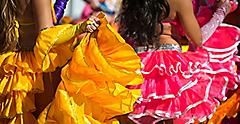
Today, the glitzy and glamorous Carnival is far from what it once was. Over time, it has evolved to become more distinctively Brazilian. It's also an opportunity to gender-bend as typical Carnival outfits consist of flamboyant, colorful samba costumes, with feathered accents and loud headpieces. Now a global event, Carnival has also become more cosmopolitan, with throngs of tourists from every corner of the world cheering as the parade passes.
That's the other main change: What was once a chaotic street party has now become a well-choreographed parade, which in spite of its large size and hyper energy, is extremely organized. Rio's Carnival is the most famous one in Brazil, but it's not the only one. If you happen to be in other cities like Salvador and São Paulo at this time, you can expect to see similar festivities.
Uncover Rio De Janeiro's Local Neighborhoods

Rio’s hilltop Santa Teresa neighborhood is a mashup of past and present. Heritage street cars, which date back to the late 19th century, still run along cobbled streets. In Lapa, just beneath Santa Teresa, stands an even more ancient structure. The Carioca Aqueduct, more commonly known as the Lapa Arches, was Rio's main water source when it opened way back in 1723. Today, it's one of the city's best places to take a selfie or a group photo!
Meanwhile, not far from Lapa is Rio's modern downtown. Don't be fooled by all the skyscrapers, however — history abounds here. The turn-of-last-century Municipal Theater, whose design was inspired by Paris' Opera House, stands formidably amid the modern glass jungle. While the Rio de Janeiro Cathedral is newer, having been built in the 1970s, the unique and slightly off-color way it pays tribute to Brazil's predominant Catholicism is timelessly fascinating.
Heading south from downtown takes you to the neighborhoods of Botafogo and Flamengo, which sit right on Guanabara Bay, with Sugarloaf Mountain looming in the distance. Both of these neighborhoods are replete with heritage: Botafogo hosts the aforementioned Museu do Índio, while Flamengo's name is an homage to the Flemish sailors who made an unsuccessful attempt to invade Rio in 1599. In Urca, which is right at the base of Sugarloaf, you can find Rua São Sebastião, Rio's oldest street.
The popular beachside neighborhoods of Copacabana, Ipanema, and Leblon are slightly less rich in history, with Copacabana in particular having only gained notoriety after the tourism boom of the 1970s. However, an important piece of cultural heritage — the 1960s song "The Girl from Ipanema" — has its origins, not surprisingly, in Ipanema. You can still have dinner at Garota de Ipanema, the restaurant where it's said to have been written.
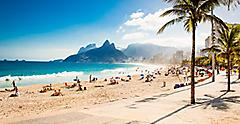
Reading up on the history of Rio de Janeiro is a must-do while planning your vacation trip to Brazil. Rio is replete with rich heritage — from the very first days of its (re)discovery by Portuguese explorers, to the later development of neighborhoods like Botafogo and Flamengo and the establishment of tourist attractions like the city botanical gardens and the tradition of Carnival. You may find that taking a cultural tourism vacation to discover the history of Rio firsthand will enhance your experience and understanding of this wanderlust destination.
Get Royal Deals, Sign Up Today

Getting There
Explore Our Most Affordable Itineraries
Revel in the tales behind Rio's beaches, landmarks, and famous Carnival onboard an Ultimate World Cruise.





